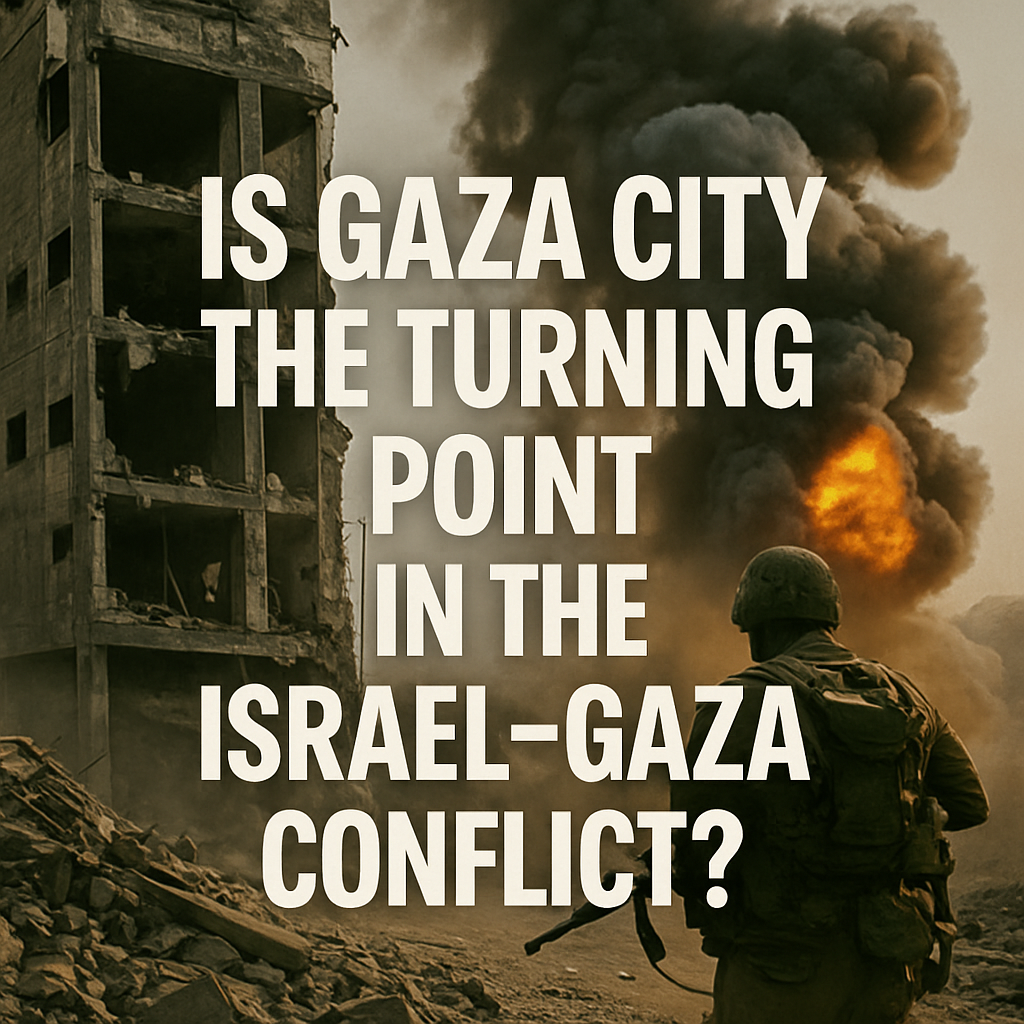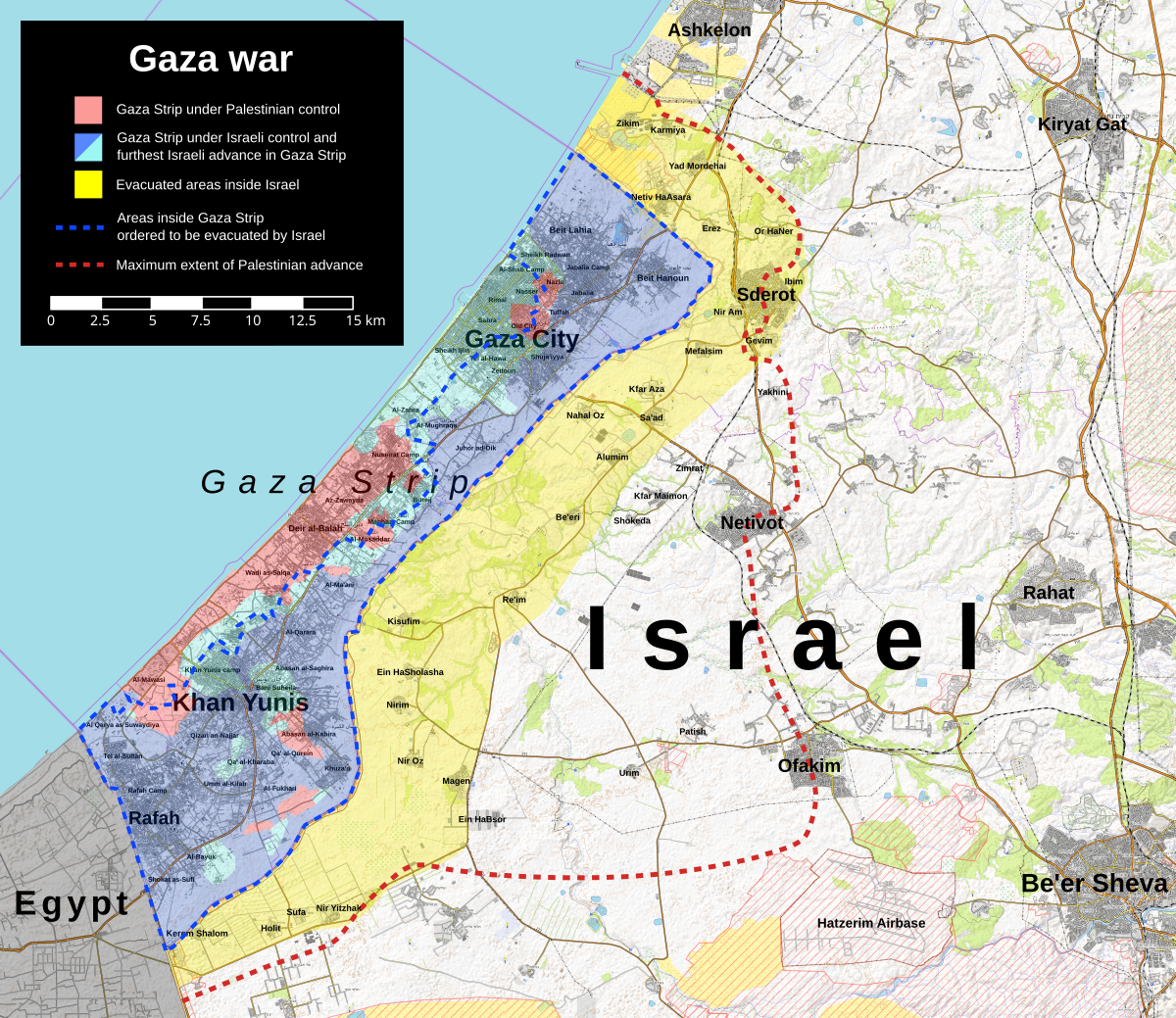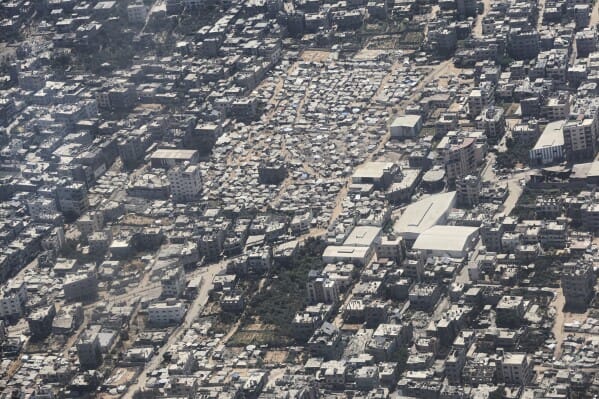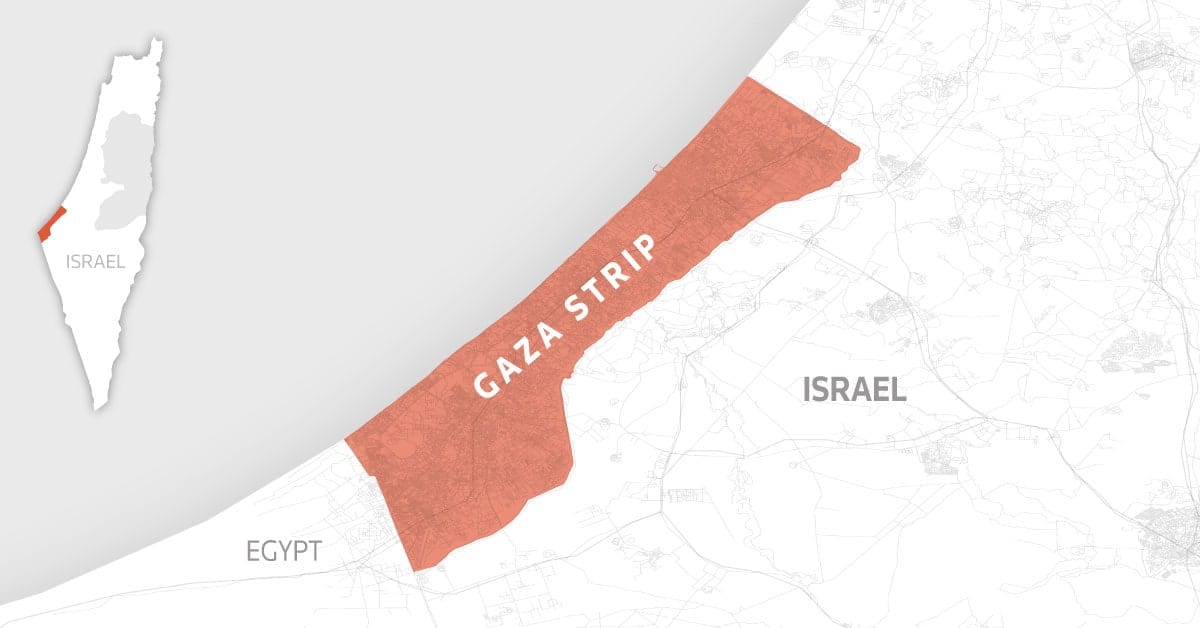The Endgame Gambit: Netanyahu's Gaza City Offensive and the Perilous Calculus of War
Investigating Netanyahu's renewed Gaza City offensive. Is it a tactical necessity or a political gamble?

Written by Lavanya, Intern, Allegedly The News
GAZA CITY – August 8, 2025
The early hours of August 8, 2025, marked a new and perilous chapter in the Israel-Hamas war. Following a marathon meeting that stretched into the night, Israel’s Security Cabinet unanimously approved a plan for the military to mount a renewed ground offensive to seize full control of Gaza City, the heart of the coastal strip. This decision comes nearly two years into a war that has already leveled much of the territory, shattering a fragile ceasefire and re-igniting a fierce debate over Israel’s ultimate war aims and the immense costs of achieving them.
Anatomy of a Renewed Offensive
The Blueprint: Netanyahu's Vision for Post-Hamas Gaza
Prime Minister Benjamin Netanyahu, speaking in an interview with Fox News ahead of the cabinet meeting, publicly outlined his plan to take "full control of the Gaza Strip" in order to "remove Hamas there" and ensure Israel's security. The Security Cabinet's formal approval of a plan specifically targeting Gaza City and other central camps follows this declaration.
The cabinet also adopted five guiding principles for a postwar reality, which serve as the foundation of the plan. These include the disarmament of Hamas, the demilitarization of Gaza, the release of all remaining hostages, the maintenance of Israeli security control, and the establishment of an alternative civilian administration that is explicitly neither Hamas nor the Palestinian Authority (PA). The most controversial element of the proposal is Netanyahu’s stated intention to "hand it over to Arab forces that will govern it properly".This proposal, however, remains conspicuously vague, with no specific countries or mechanisms named. This vagueness appears to be a deliberate strategy. Domestically, it provides the semblance of a viable "day-after" plan to the Israeli public without committing to the politically toxic option of involving the PA. Externally, it serves as a rhetorical device to deflect international criticism of a permanent occupation, creating the illusion of a pathway to a different future. The fact that the plan was approved despite significant opposition from Israel's own military leadership and protesting hostage families underscores that its political utility to the Prime Minister outweighs its strategic feasibility.
A Chronology of Escalation: From Ceasefire to New Offensive
The renewed offensive marks a clear escalation after months of continued fighting. The period following the breakdown of the second Israel-Hamas ceasefire in March 2025 was characterized by ongoing ground operations and airstrikes. The IDF, having previously declared Hamas militarily defeated, found itself conducting "repeated raids into the northern Strip" to disrupt the group's efforts to reconstitute its ranks and rebuild its capabilities. Ceasefire talks, mediated by Qatar, Egypt, and the United States, ultimately collapsed in late July. Hamas reportedly insisted on a permanent end to the war, while Israel demanded that the group be defeated and disarmed.
Amid this diplomatic failure and mounting humanitarian warnings, Netanyahu's office began leaking details of plans for a full Gaza takeover in early August. This culminated in the August 8, 2025, Security Cabinet decision to formally authorize the Gaza City offensive, pushing the conflict into its latest, and possibly most dangerous, phase.

The Strategic Heart of the Conflict: Why Gaza City Matters
Gaza City is not merely a geographic location; it is the historical, political, and economic heart of the Gaza Strip. Its strategic importance dates back millennia, serving as a key entrepôt on the ancient coastal trade route and an administrative center for various empires. Today, it remains a critical hub. Despite previous IDF campaigns that largely bypassed it to avoid harm to hostages, Gaza City is believed to house a significant portion of Hamas’s remaining command-and-control infrastructure and a vast network of tunnels. The previous strategy of "systematic clearing operations" successfully degraded Hamas, but it was insufficient, as small cells of fighters were able to "exploit the IDF withdrawal to establish a sanctuary for themselves and begin reconstitution efforts". The renewed push into Gaza City is an implicit acknowledgment that the IDF’s earlier operations were insufficient. To prevent Hamas from reconstituting and permanently securing the area, a new, more aggressive, and likely more costly strategy is being implemented. This, however, carries the exact risk of a "prolonged insurgency" that the military itself has warned against.
The High-Stakes Domestic Debate
Tactical Necessity or a Political Lifeline?
The new offensive directly addresses the central question of this report: is it a tactical necessity or a political lifeline for the Prime Minister? Yoram Cohen, a former head of Shin Bet, has publicly called Netanyahu's stated objectives in Gaza a "fantasy".This sentiment is echoed by military analysts who see the war becoming an endless quagmire. The timing of the offensive, following stalled ceasefire talks and amidst mounting domestic pressure, points to a potential political calculation.
Netanyahu's own public trust rating remains low at 40%, while his military chief, Lt. Gen. Eyal Zamir, enjoys a much higher public trust rating of 68.5%. This profound trust deficit transforms a military policy debate into a political crisis. The Prime Minister is pushing a plan opposed by his own highly trusted military leaders, while a significant portion of the public, including the families of hostages, protests against it. This suggests that the Prime Minister's primary audience is not the military or the general public but his far-right coalition partners, who have repeatedly threatened to collapse the government if the war ends prematurely. The political survival of Netanyahu thus becomes inexorably linked to the war's continuation, making any decision on the war's future a decision on his own political future.
The Unprecedented Military Dissent
The public-facing rift between Netanyahu and his top brass is unprecedented. Senior Israeli military officers, including IDF Chief of Staff Lt. Gen. Eyal Zamir, have reportedly warned in closed-door meetings against a full Gaza occupation, fearing it would plunge Israel into a "black hole" of "prolonged insurgency, humanitarian responsibility, and heightened risk to hostages".An unnamed security official was quoted as saying, "We are entering a Vietnam model, with our eyes wide open".This statement is a stark indication that elements within Israel's security establishment believe the current course is strategically doomed, leading to a protracted and unwinnable conflict against a resurgent, unconventional foe. This highlights a critical and possibly fatal miscalculation by the political leadership, which appears to be prioritizing a political objective over a strategic warning about the long-term consequences.
The Hostage Families' Desperate Protest
The human cost of the decision is most acutely felt by the families of the remaining 50 hostages, only around 20 of whom are believed to be alive. They are actively protesting the renewed offensive, fearing it will seal their loved ones' fate. Protesters have accused Netanyahu of "prolonging the war to satisfy extremists in his government" and working "only for himself". In a desperate act, almost two dozen relatives set sail toward the Gaza maritime border to broadcast messages of protest. In response, Israeli police have cracked down on protests in Tel Aviv, arresting demonstrators for "disrupting public order".

Timeline of the Gaza City Offensive (2025)
| Date | Event | Significance |
| March 18 | Breakdown of Israel-Hamas ceasefire agreement | Marks the end of a brief truce and the resumption of full-scale conflict. |
| April-May | Renewed IDF raids in northern Gaza | An acknowledgment of Hamas's efforts to reconstitute and a shift from full withdrawal to targeted disruption. |
| July | Ceasefire talks in Qatar collapse | Hamas and Israel fail to agree on terms, with Hamas demanding a permanent end to the war. |
| August 6 | Reports of an impending Gaza takeover leak | Netanyahu's plans for a major escalation begin to circulate, triggering domestic and international backlash. |
| August 7 | Netanyahu’s Fox News interview | The Prime Minister officially states his intent to take "full control of all of Gaza." |
| August 8 | Security Cabinet approves Gaza City offensive | Formal authorization for a renewed ground offensive, marking a major escalation. |
The Humanitarian Catastrophe
A City on the Brink of Famine
The renewed offensive targets Gaza City, one of the few remaining areas of the territory not fully under Israeli control or evacuation orders. The humanitarian situation in the area is already catastrophic. UN-backed experts have warned of an "unfolding famine," and a UNICEF report from July 2025 states that over 12,000 children in Gaza are suffering from acute malnutrition, with the "most severe deterioration" observed in the northern region. Hospitals have reported a rapid increase in hunger-related deaths, with at least 197 people, including 96 children, dying from famine and malnutrition as of early August.
The humanitarian crisis is further compounded by violence at aid distribution points, where over 1,600 Palestinians have been killed seeking food since May 2025. This includes a controversial new system run by the Israeli-backed Gaza Humanitarian Foundation (GHF), which UN officials and human rights experts have criticized as a "militarized" system that turns aid distribution into a "bloodbath". The International Criminal Court has issued arrest warrants for Netanyahu and his former defense minister, alleging war crimes that include the use of "starvation as a method of war". This deliberate blocking of aid and the violence surrounding its distribution, coupled with a new offensive that will "further disrupt aid deliveries," suggests a pattern of action that is under serious international legal scrutiny and will inevitably be viewed through this lens, deepening Israel's legal exposure and international isolation.
Gaza's Humanitarian Crisis in Numbers
| Indicator | Data/Estimate (as of Aug 2025) | Source |
| Palestinian Casualties | 61,000+ killed; 152,000+ injured | Gaza Health Ministry |
| Displaced Population | Nearly 100% of 2 million people displaced; 737,000+ displaced since March 2025 ceasefire breakdown | UN |
| Children with Acute Malnutrition | 12,000+ children under five | UNICEF |
| Hunger-Related Deaths | 197 people, including 96 children | Gaza Health Ministry |
| Infrastructure Damage | Over $30 billion in physical damage; 84% of health facilities and 92% of primary roads damaged | World Bank & UN |
| Debris and Rubble | 41 to 47 million tons | UN & World Bank |
Rubble and Ruin: A Portrait of Infrastructure Collapse
The offensive takes place in a landscape of systemic destruction. Joint World Bank and UN reports estimate the cost of damage to critical infrastructure at $18.5 billion by early 2024 and up to $30 billion by late 2024, representing nearly 100% of Gaza's GDP in 2022. The destruction has been widespread and targeted, with 84% of health facilities and 92% of primary roads either damaged or destroyed, leaving the territory's population with minimal access to essential services. One displaced Palestinian, Maysaa al-Heila, aptly summarizes the situation, stating, "There is nothing left to occupy... There is no Gaza left".
The scale of this destruction is not just a physical reality; it is a strategic element that makes the territory virtually uninhabitable. The latest assessment puts the reconstruction and recovery needs at an estimated $53.2 billion over the next decade. The sheer amount of debris, now estimated at up to 47 million tons, will take years to clear, posing a monumental challenge.The leveling of entire cities creates a permanent crisis that will likely prevent the return of a significant portion of the population. This aligns with the stated goals of Netanyahu's far-right allies, who seek to "relocate most of Gaza's population to other countries".The offensive, therefore, can be viewed as an action designed to make a "post-war" Gaza non-viable for a majority of its population, a condition that raises serious questions about the long-term intent of the operation.
A Fractured World and Faltering Diplomacy
International Reactions and Israel's Growing Isolation
The renewed offensive has been met with widespread condemnation, further isolating Israel on the world stage. The UN has warned of "catastrophic consequences". The International Court of Justice (ICJ) is considering allegations of genocide against Israel, while the International Criminal Court (ICC) has issued arrest warrants for Netanyahu and his former defense minister for war crimes, including the use of "starvation as a method of war". These legal proceedings are a game-changer, shifting the international conversation from political debate to legal accountability. The new offensive, with its predictable humanitarian consequences, will be viewed by many as further evidence for these ongoing legal cases, providing international institutions and hostile nations with additional ammunition to pressure and isolate Israel.
In a powerful diplomatic rebuke, a growing number of countries, including key European allies like France and Britain, have taken steps to recognize a Palestinian state. This is seen by analysts as an effort to strengthen the Palestinian position in any future negotiations and to further isolate the United States, which remains the only permanent member of the UN Security Council yet to do so.

The 'Arab Forces' Dilemma: A Regional Non-Starter?
Netanyahu's proposal to hand over post-war administration to "friendly Arab forces" has been met with a unified rejection from the region. In a major joint declaration, the Arab League, with key states like Saudi Arabia, Egypt, and Qatar, made it clear that Hamas must be disarmed and that governance must fall to the Palestinian Authority. This is a direct contradiction of Netanyahu's vision, which explicitly rules out the PA. Arab states have consistently conditioned their involvement in Gaza's future on a clear path to a two-state solution and the inclusion of the PA.
This creates a diplomatic catch-22 for Israel. The government cannot achieve its stated post-Hamas governance goal without Arab state cooperation, but that cooperation is contingent on political terms—a two-state solution and the PA’s involvement—that his government explicitly rejects. Without a credible partner to hand over control to, the only options are a permanent, open-ended occupation, which Israel's military leaders have warned against, or a governance vacuum that Hamas will inevitably fill. This places Netanyahu’s "day-after" plan in the realm of political fantasy, deepening Israel's strategic isolation.
Post-War Governance Proposals
| Proponent | Key Elements of Proposal | Key Conditions/Sticking Points |
| Israel (Netanyahu) | Disarm Hamas, demilitarize Gaza, establish a security perimeter, and hand over civil governance to unspecified "friendly Arab forces" | Explicitly rules out any role for the Palestinian Authority. |
| Arab League / PA | Disarm Hamas and transfer all weapons to the PA, which would govern a unified West Bank and Gaza Strip. Backed by a temporary international stabilization mission. | Contingent on a clear path toward a two-state solution and a rejection of Israeli occupation. |
The US Position: A Muted Response
The United States, under President Donald Trump, has adopted a position of strategic ambiguity. While the State Department has reportedly expressed its opposition to Israel's plan to seize full control of Gaza, Trump's public statements have offered Netanyahu a degree of political cover. When asked if he supported the reoccupation, Trump stated, "It's going to be pretty much up to Israel," a hands-off approach that gives Israel operational freedom while signaling to international critics that he is not directly responsible for the humanitarian fallout. This position is also a nod to his Republican base, who remain largely supportive of both Israel's military actions and Netanyahu himself. However, this stance risks further isolating the U.S. from its traditional allies, who are increasingly taking a firmer line and recognizing Palestinian statehood.
The Quagmire's Gravity
The renewed Gaza City offensive is being framed by Prime Minister Netanyahu as a decisive phase, a necessary final push to achieve the total defeat of Hamas. However, a meticulous analysis of the evidence suggests a different conclusion. The offensive, rather than marking the beginning of the end, risks pushing Israel deeper into a self-destructive and prolonged military quagmire. It is a strategic gamble that implicitly acknowledges the failure of the previous military campaigns to create a durable post-Hamas reality. By re-engaging in a ground war in Gaza City without a credible political plan for the "day after," Netanyahu's government is opting for a permanent state of occupation and insurgency. This not only endangers the lives of the remaining hostages and countless civilians but also further isolates Israel internationally and deepens the domestic political crisis, locking the nation into a perilous path with no clear exit. The gravity of the quagmire, as warned by Israel's own military, is now more real than ever.
Answers to give
What are the long-term political and military consequences of the open rift between Israel's elected leadership and its military and intelligence chiefs? Can Israel maintain a stable government and a functioning military command under such conditions? Given the catastrophic destruction of infrastructure and the hardening of political positions, what are the chances of a two-state solution or any viable political resolution for the Israeli-Palestinian conflict? Is a "binational state" with millions of disenfranchised Palestinians now the only endgame?
Sources
- News Agencies: The Associated Press, Al Jazeera, Anadolu Agency, Belga News Agency, CBC News, The Guardian, The Jerusalem Post, The Times of Israel, and The Hindu.
- International Organizations: The United Nations (UNRWA, OCHA), The World Bank, and the European Union.
- Think Tanks & Research: The Middle East Institute, The Washington Institute for Near East Policy, and The Soufan Center.
- Other Sources: Britannica.com, Reuters, Wikimedia Commons, Al Jazeera, and Wikipedia.




